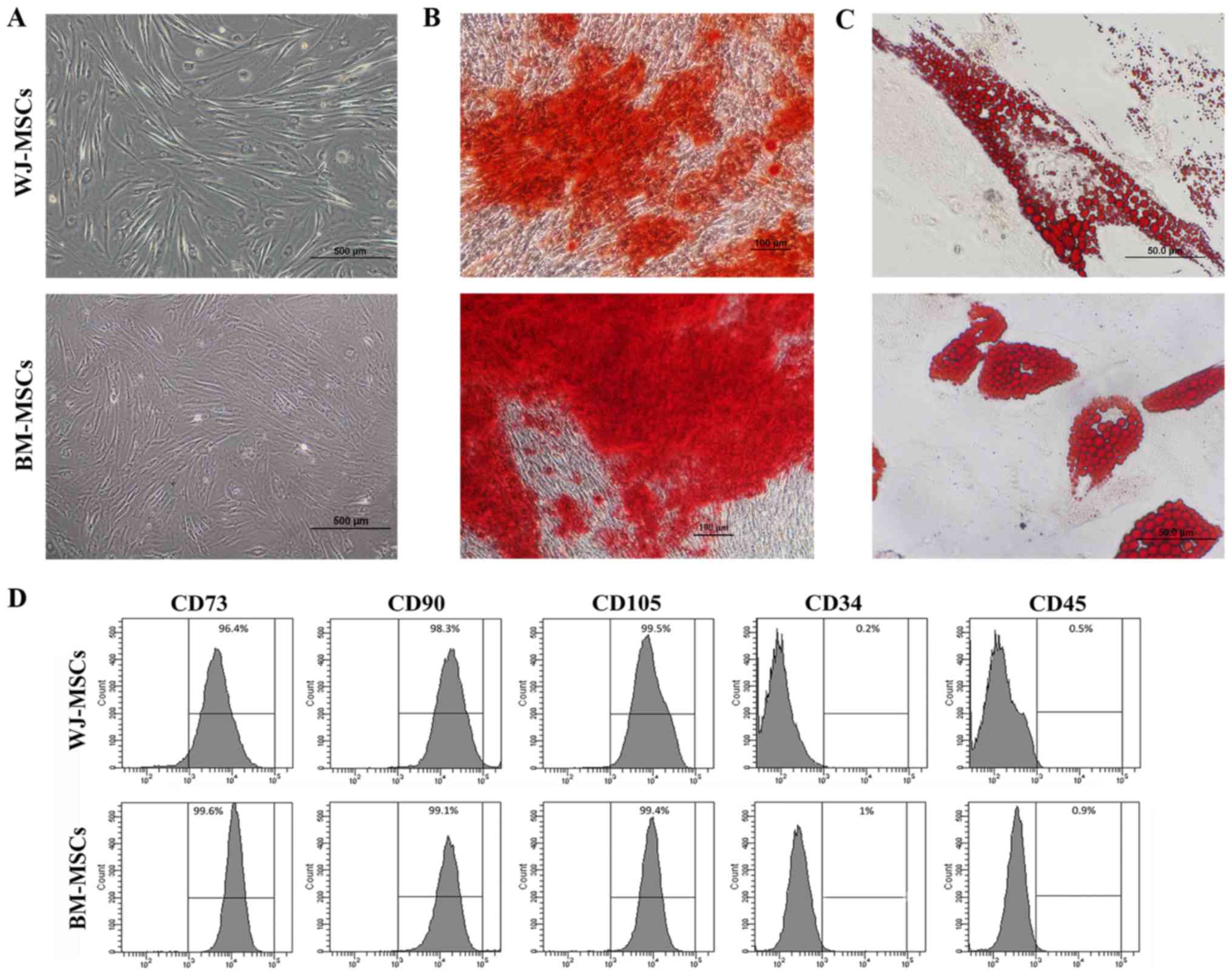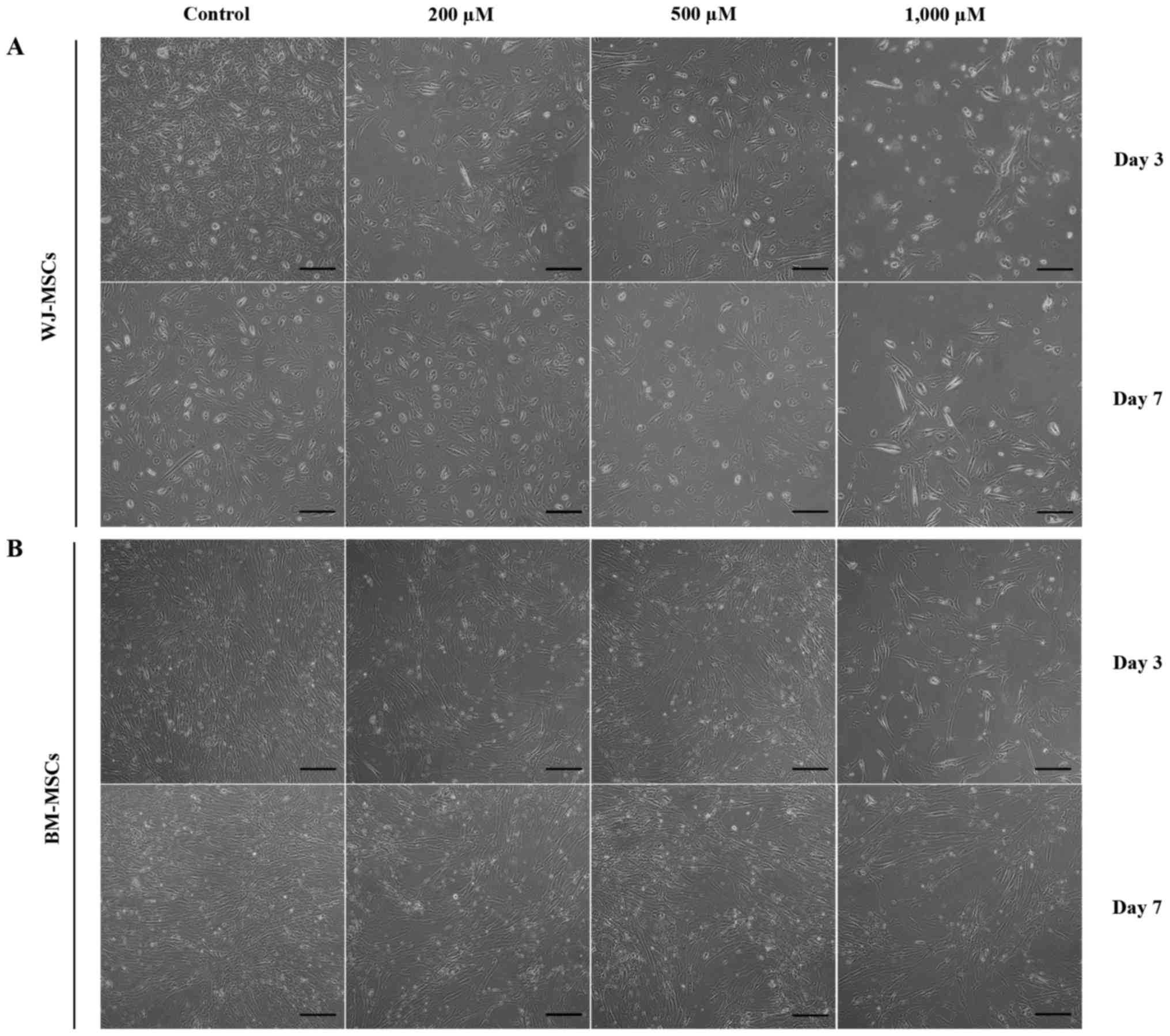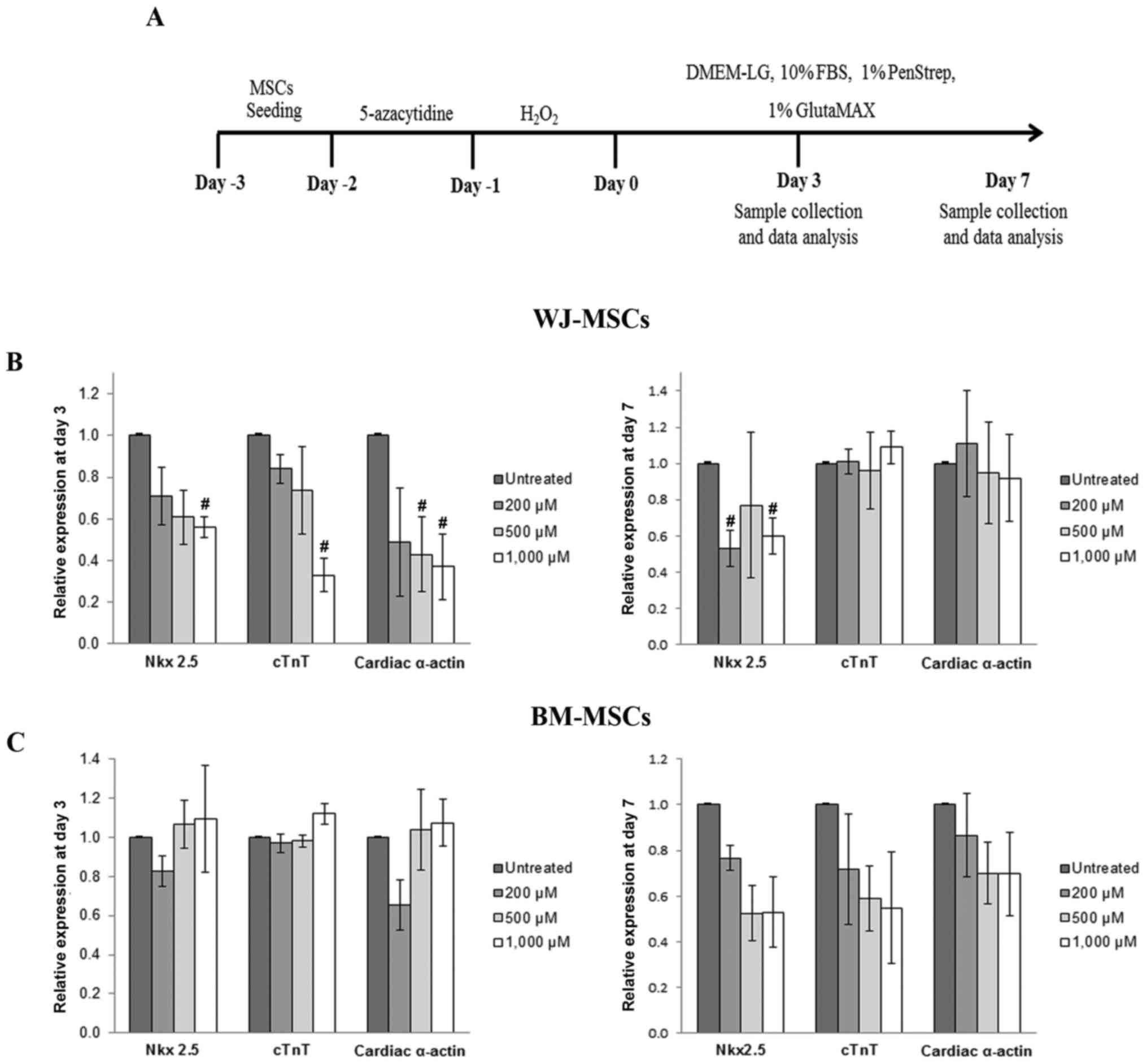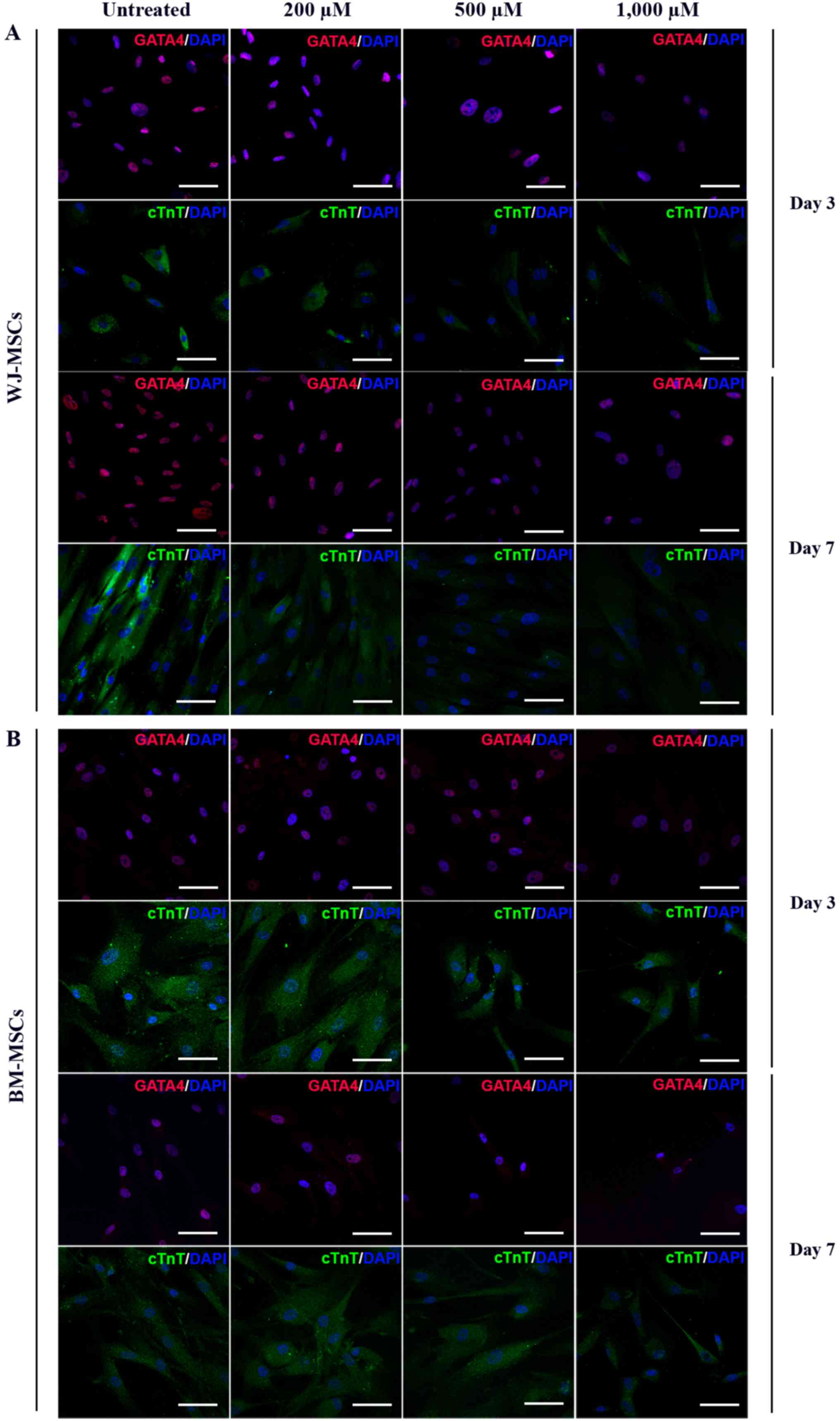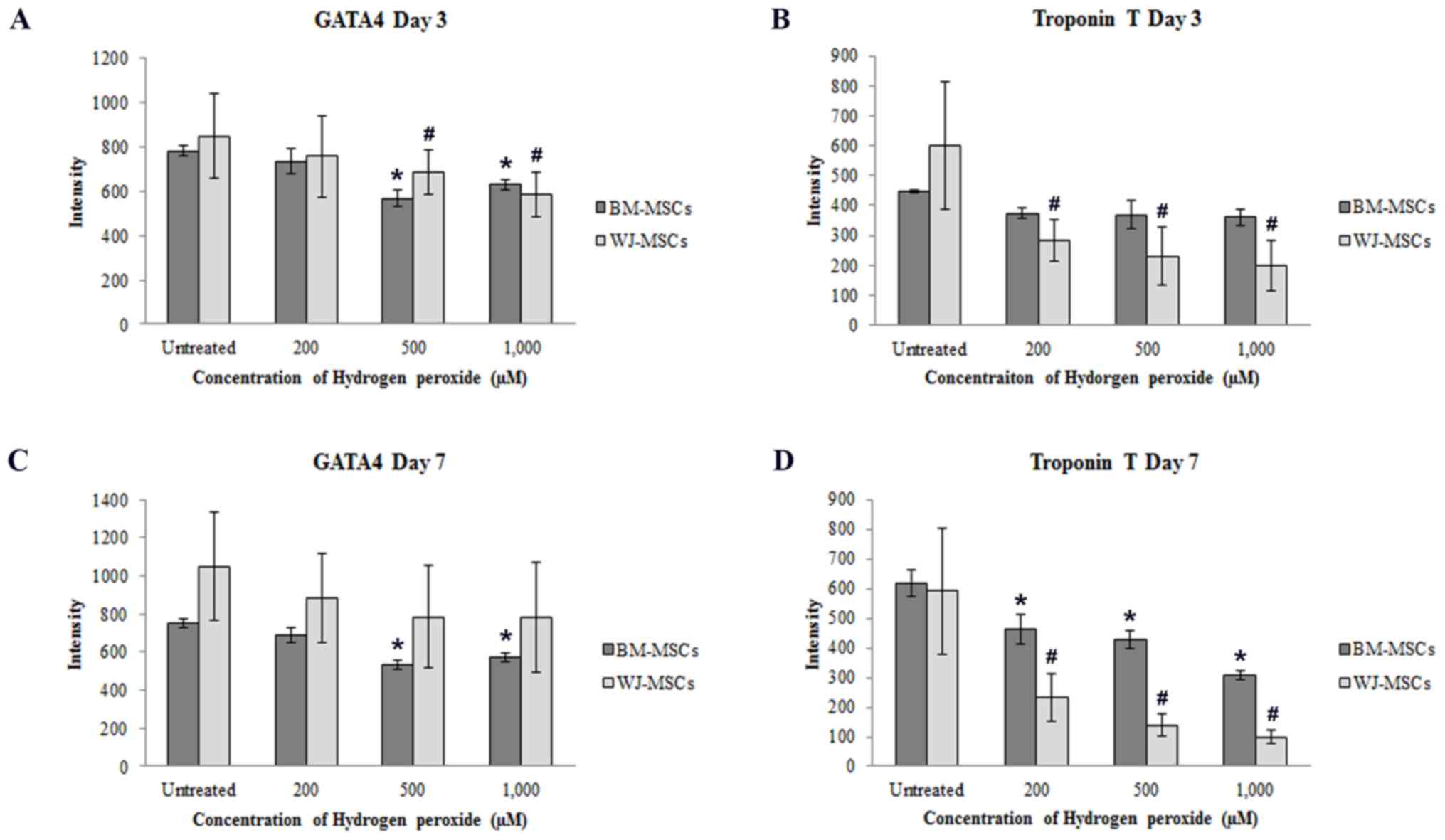|
1
|
McAloon CJ, Boylan LM, Hamborg T, Stallard
N, Osman F, Lim PB and Hayat SA: The changing face of
cardiovascular disease 2000–2012: An analysis of the world health
organisation global health estimates data. Int J Cardiol.
224:256–264. 2016. View Article : Google Scholar : PubMed/NCBI
|
|
2
|
von Harsdorf R, Li PF and Dietz R:
Signaling pathways in reactive oxygen species-induced cardiomyocyte
apoptosis. Circulation. 99:2934–2941. 1999. View Article : Google Scholar : PubMed/NCBI
|
|
3
|
Xu Z, Park SS, Mueller RA, Bagnell RC,
Patterson C and Boysen PG: Adenosine produces nitric oxide and
prevents mitochondrial oxidant damage in rat cardiomyocytes.
Cardiovasc Res. 65:803–812. 2005. View Article : Google Scholar : PubMed/NCBI
|
|
4
|
Tao L, Gao E, Jiao X, Yuan Y, Li S,
Christopher TA, Lopez BL, Koch W, Chan L, Goldstein BJ and Ma XL:
Adiponectin cardioprotection after myocardial ischemia/reperfusion
involves the reduction of oxidative/nitrative stress. Circulation.
115:1408–1416. 2007. View Article : Google Scholar : PubMed/NCBI
|
|
5
|
Bernstein HS and Srivastava D: Stem cell
therapy for cardiac disease. Pediatr Res. 71:491–499. 2012.
View Article : Google Scholar : PubMed/NCBI
|
|
6
|
Gao LR, Zhang NK, Ding QA, Chen HY, Hu X,
Jiang S, Li TC, Chen Y, Wang ZG, Ye Y and Zhu ZM: Common expression
of stemness molecular markers and early cardiac transcription
factors in human Wharton's jelly-derived mesenchymal stem cells and
embryonic stem cells. Cell Transplant. 22:1883–1900. 2013.
View Article : Google Scholar : PubMed/NCBI
|
|
7
|
Li Q, Han SM, Song WJ, Park SC, Ryu MO and
Youn HY: Anti-inflammatory effects of Oct4/Sox2-overexpressing
human adipose tissue-derived mesenchymal stem cells. In Vivo.
31:349–356. 2017. View Article : Google Scholar : PubMed/NCBI
|
|
8
|
Shahini A, Mistriotis P, Asmani M, Zhao R
and Andreadis ST: NANOG restores contractility of mesenchymal stem
cell-based senescent microtissues. Tissue Eng Part A. 23:535–545.
2017. View Article : Google Scholar : PubMed/NCBI
|
|
9
|
Zhou C, Yang B, Tian Y, Jiao H, Zheng W,
Wang J and Guan F: Immunomodulatory effect of human umbilical cord
Wharton's jelly-derived mesenchymal stem cells on lymphocytes. Cell
Immunol. 272:33–38. 2011. View Article : Google Scholar : PubMed/NCBI
|
|
10
|
Baksh D, Yao R and Tuan RS: Comparison of
proliferative and multilineage differentiation potential of human
mesenchymal stem cells derived from umbilical cord and bone marrow.
Stem Cells. 25:1384–1392. 2007. View Article : Google Scholar : PubMed/NCBI
|
|
11
|
Ng F, Boucher S, Koh S, Sastry KS, Chase
L, Lakshmipathy U, Choong C, Yang Z, Vemuri MC, Rao MS and Tanavde
V: PDGF, TGF-beta, and FGF signaling is important for
differentiation and growth of mesenchymal stem cells (MSCs):
Transcriptional profiling can identify markers and signaling
pathways important in differentiation of MSCs into adipogenic,
chondrogenic, and osteogenic lineages. Blood. 112:295–307. 2008.
View Article : Google Scholar : PubMed/NCBI
|
|
12
|
Kyurkchiev D, Bochev I, Ivanova-Todorova
E, Mourdjeva M, Oreshkova T, Belemezova K and Kyurkchiev S:
Secretion of immunoregulatory cytokines by mesenchymal stem cells.
World J Stem Cells. 6:552–570. 2014. View Article : Google Scholar : PubMed/NCBI
|
|
13
|
Xiang MX, He AN, Wang JA and Gui C:
Protective paracrine effect of mesenchymal stem cells on
cardiomyocytes. J Zhejiang Univ Sci B. 10:619–624. 2009. View Article : Google Scholar : PubMed/NCBI
|
|
14
|
Rodrigues M, Turner O, Stolz D, Griffith
LG and Wells A: Production of reactive oxygen species by
multipotent stromal cells/mesenchymal stem cells upon exposure to
fas ligand. Cell Transplant. 21:2171–2187. 2012. View Article : Google Scholar : PubMed/NCBI
|
|
15
|
Elahi MM, Kong YX and Matata BM: Oxidative
stress as a mediator of cardiovascular disease. Oxid Med Cell
Longev. 2:259–269. 2009. View Article : Google Scholar : PubMed/NCBI
|
|
16
|
Jin G, Qiu G, Wu D, Hu Y, Qiao P, Fan C
and Gao F: Allogeneic bone marrow-derived mesenchymal stem cells
attenuate hepatic ischemia-reperfusion injury by suppressing
oxidative stress and inhibiting apoptosis in rats. Int J Mol Med.
31:1395–1401. 2013. View Article : Google Scholar : PubMed/NCBI
|
|
17
|
Dominici M, Le Blanc K, Mueller I,
Slaper-Cortenbach I, Marini F, Krause D, Deans R, Keating A,
Prockop Dj and Horwitz E: Minimal criteria for defining multipotent
mesenchymal stromal cells. The international society for cellular
therapy position statement. Cytotherapy. 8:315–317. 2006.
View Article : Google Scholar : PubMed/NCBI
|
|
18
|
Brandl A, Meyer M, Bechmann V, Nerlich M
and Angele P: Oxidative stress induces senescence in human
mesenchymal stem cells. Exp Cell Res. 317:1541–1547. 2011.
View Article : Google Scholar : PubMed/NCBI
|
|
19
|
Burova E, Borodkina A, Shatrova A and
Nikolsky N: Sublethal oxidative stress induces the premature
senescence of human mesenchymal stem cells derived from
endometrium. Oxid Med Cell Longev. 2013:4749312013. View Article : Google Scholar : PubMed/NCBI
|
|
20
|
Supokawej A, Kheolamai P, Nartprayut K,
U-Pratya Y, Manochantr S, Chayosumrit M and Issaragrisil S:
Cardiogenic and myogenic gene expression in mesenchymal stem cells
after 5-azacytidine treatment. Turk J Haematol. 30:115–121. 2013.
View Article : Google Scholar : PubMed/NCBI
|
|
21
|
Livak KJ and Schmittgen TD: Analysis of
relative gene expression data using real-time quantitative PCR and
the 2(-Delta Delta C(T)) method. Methods. 25:402–408. 2001.
View Article : Google Scholar : PubMed/NCBI
|
|
22
|
Dunn KW, Kamocka MM and McDonald JH: A
practical guide to evaluating colocalization in biological
microscopy. Am J Physiol Cell Physiol. 300:C723–C742. 2011.
View Article : Google Scholar : PubMed/NCBI
|
|
23
|
Sheikhzadeh F, Ward RK, Carraro A, Chen
ZY, van Niekerk D, Miller D, Ehlen T, MacAulay CE, Follen M, Lane
PM and Guillaud M: Quantification of confocal fluorescence
microscopy for the detection of cervical intraepithelial neoplasia.
Biomed Eng Online. 14:962015. View Article : Google Scholar : PubMed/NCBI
|
|
24
|
Benameur L, Charif N, Li Y, Stoltz JF and
de Isla N: Toward an understanding of mechanism of aging-induced
oxidative stress in human mesenchymal stem cells. Biomed Mater Eng.
25 Suppl 1:S41–S46. 2015.
|
|
25
|
Gan P, Gao Z, Zhao X and Qi G: Surfactin
inducing mitochondria-dependent ROS to activate MAPKs, NF-κB and
inflammasomes in macrophages for adjuvant activity. Sci Rep.
6:393032016. View Article : Google Scholar : PubMed/NCBI
|
|
26
|
Zhao W, Zhao T, Chen Y, Ahokas RA and Sun
Y: Oxidative stress mediates cardiac fibrosis by enhancing
transforming growth factor-beta1 in hypertensive rats. Mol Cell
Biochem. 317:43–50. 2008. View Article : Google Scholar : PubMed/NCBI
|
|
27
|
Chen S, Chen X, Wu X, Wei S, Han W, Lin J,
Kang M and Chen L: Hepatocyte growth factor-modified mesenchymal
stem cells improve ischemia/reperfusion-induced acute lung injury
in rats. Gene Ther. 24:3–11. 2017. View Article : Google Scholar : PubMed/NCBI
|
|
28
|
Mureli S, Gans CP, Bare DJ, Geenen DL,
Kumar NM and Banach K: Mesenchymal stem cells improve cardiac
conduction by upregulation of connexin 43 through paracrine
signaling. Am J Physiol Heart Circ Physiol. 304:H600–H609. 2013.
View Article : Google Scholar : PubMed/NCBI
|
|
29
|
Reppel L, Schiavi J, Charif N, Leger L, Yu
H, Pinzano A, Henrionnet C, Stoltz JF, Bensoussan D and Huselstein
C: Chondrogenic induction of mesenchymal stromal/stem cells from
Wharton's jelly embedded in alginate hydrogel and without added
growth factor: An alternative stem cell source for cartilage tissue
engineering. Stem Cell Res Ther. 6:2602015. View Article : Google Scholar : PubMed/NCBI
|
|
30
|
Valle-Prieto A and Conget PA: Human
mesenchymal stem cells efficiently manage oxidative stress. Stem
Cells Dev. 19:1885–1893. 2010. View Article : Google Scholar : PubMed/NCBI
|
|
31
|
Balasubramanian S, Venugopal P, Sundarraj
S, Zakaria Z, Majumdar AS and Ta M: Comparison of chemokine and
receptor gene expression between Wharton's jelly and bone
marrow-derived mesenchymal stromal cells. Cytotherapy. 14:26–33.
2012. View Article : Google Scholar : PubMed/NCBI
|
|
32
|
Pu L, Meng M, Wu J, Zhang J, Hou Z, Gao H,
Xu H, Liu B, Tang W, Jiang L and Li Y: Compared to the amniotic
membrane, Wharton's jelly may be a more suitable source of
mesenchymal stem cells for cardiovascular tissue engineering and
clinical regeneration. Stem Cell Res Ther. 8:722017. View Article : Google Scholar : PubMed/NCBI
|
|
33
|
Batsali AK, Pontikoglou C, Koutroulakis D,
Pavlaki KI, Damianaki A, Mavroudi I, Alpantaki K, Kouvidi E,
Kontakis G and Papadaki HA: Differential expression of cell cycle
and WNT pathway-related genes accounts for differences in the
growth and differentiation potential of Wharton's jelly and bone
marrow-derived mesenchymal stem cells. Stem Cell Res Ther.
8:1022017. View Article : Google Scholar : PubMed/NCBI
|
|
34
|
Vinoth KJ, Manikandan J, Sethu S,
Balakrishnan L, Heng A, Lu K, Poonepalli A, Hande MP and Cao T:
Differential resistance of human embryonic stem cells and somatic
cell types to hydrogen peroxide-induced genotoxicity may be
dependent on innate basal intracellular ROS levels. Folia Histochem
Cytobiol. 53:169–174. 2015. View Article : Google Scholar : PubMed/NCBI
|
|
35
|
Ertaş G, Ural E, Ural D, Aksoy A, Kozdağ
G, Gacar G and Karaöz E: Comparative analysis of apoptotic
resistance of mesenchymal stem cells isolated from human bone
marrow and adipose tissue. ScientificWorldJournal. 2012:1056982012.
View Article : Google Scholar : PubMed/NCBI
|
|
36
|
Zhang G, Zou X, Huang Y, Wang F, Miao S,
Liu G, Chen M and Zhu Y: Mesenchymal stromal cell-derived
extracellular vesicles protect against acute kidney injury through
anti-oxidation by Enhancing Nrf2/ARE activation in rats. kidney
Blood Press Res. 41:119–128. 2016. View Article : Google Scholar : PubMed/NCBI
|
|
37
|
Zhang J, Chen GH, Wang YW, Zhao J, Duan
HF, Liao LM, Zhang XZ, Chen YD and Chen H: Hydrogen peroxide
preconditioning enhances the therapeutic efficacy of Wharton's
Jelly mesenchymal stem cells after myocardial infarction. Chin Med
J (Engl). 125:3472–3478. 2012.PubMed/NCBI
|
|
38
|
Zhang Y, Sivakumaran P, Newcomb AE,
Hernandez D, Harris N, Khanabdali R, Liu GS, Kelly DJ, Pébay A,
Hewitt AW, et al: Cardiac repair with a novel population of
mesenchymal stem cells resident in the Human Heart. Stem Cells.
33:3100–3113. 2015. View Article : Google Scholar : PubMed/NCBI
|
|
39
|
Bai J, Hu Y, Wang YR, Liu LF, Chen J, Su
SP and Wang Y: Comparison of human amniotic fluid-derived and
umbilical cord Wharton's Jelly-derived mesenchymal stromal cells:
Characterization and myocardial differentiation capacity. J Geriatr
Cardiol. 9:166–171. 2012. View Article : Google Scholar : PubMed/NCBI
|
|
40
|
Wang FW, Wang Z, Zhang YM, Du ZX, Zhang
XL, Liu Q, Guo YJ, Li XG and Hao AJ: Protective effect of melatonin
on bone marrow mesenchymal stem cells against hydrogen
peroxide-induced apoptosis in vitro. J Cell Biochem. 114:2346–2355.
2013. View Article : Google Scholar : PubMed/NCBI
|
|
41
|
Choo KB, Tai L, Hymavathee KS, Wong CY,
Nguyen PN, Huang CJ, Cheong SK and Kamarul T: Oxidative
stress-induced premature senescence in Wharton's jelly-derived
mesenchymal stem cells. Int J Med Sci. 11:1201–1207. 2014.
View Article : Google Scholar : PubMed/NCBI
|
|
42
|
Wang Y, Yi XD and Li CD: Suppression of
mTOR signaling pathway promotes bone marrow mesenchymal stem cells
differentiation into osteoblast in degenerative scoliosis: In vivo
and in vitro. Mol Biol Rep. 44:129–137. 2016. View Article : Google Scholar : PubMed/NCBI
|
|
43
|
López Y, Lutjemeier B, Seshareddy K,
Trevino EM, Hageman KS, Musch TI, Borgarelli M and Weiss ML:
Wharton's jelly or bone marrow mesenchymal stromal cells improve
cardiac function following myocardial infarction for more than 32
weeks in a rat model: A preliminary report. Curr Stem Cell Res
Ther. 8:46–59. 2013. View Article : Google Scholar : PubMed/NCBI
|
|
44
|
D'Autréaux B and Toledano MB: ROS as
signalling molecules: Mechanisms that generate specificity in ROS
homeostasis. Nat Rev Mol Cell Biol. 8:813–824. 2007. View Article : Google Scholar : PubMed/NCBI
|
|
45
|
Kobayashi CI and Suda T: Regulation of
reactive oxygen species in stem cells and cancer stem cells. J Cell
Physiol. 227:421–430. 2012. View Article : Google Scholar : PubMed/NCBI
|















